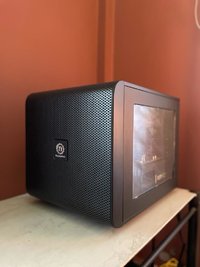Sarath
iDota
I have been looking at different storage solutions and after a few hard disk failures I was looking at different ways to backup my data, mostly home videos and other important media
Coming straight to the point:
Can I access a NAS which is at a different location and use it like a personal cloud service?
My brother is in US and has better access to the hardware. The idea is I was hoping he could get a NAS up and running at his place and I could somehow access it over the internet and store my files in it. When the time comes maybe he could get one or both HDDs here and if it permits the entire NAS system itself given the size and weight constraints.
At present I have my backups in multiple 2 to 4TB external harddisks and a recently bought 4TB internal HDD. I also have a 5TB subscription to iDrive cloud service which backs up all my data.
Due to time constraints I cannot continue to invest much time in maintaining these backups and actively monitor if my data is safe.
My idea is to have the NAS contain all the data while it syncs with my cloud account in iDrive thus having redundancy both locally and in the cloud. This will offload my efforts to seam through my external drives every time I want to backup any data.
If anyone has a better idea of data management than my present or future plan stated above then please do share it with me.
I am employed in the health care sector and have limited knowledge about hardware and software, so please excuse any naivety or gaps in knowledge that might come up in present or future posts.
Coming straight to the point:
Can I access a NAS which is at a different location and use it like a personal cloud service?
My brother is in US and has better access to the hardware. The idea is I was hoping he could get a NAS up and running at his place and I could somehow access it over the internet and store my files in it. When the time comes maybe he could get one or both HDDs here and if it permits the entire NAS system itself given the size and weight constraints.
At present I have my backups in multiple 2 to 4TB external harddisks and a recently bought 4TB internal HDD. I also have a 5TB subscription to iDrive cloud service which backs up all my data.
Due to time constraints I cannot continue to invest much time in maintaining these backups and actively monitor if my data is safe.
My idea is to have the NAS contain all the data while it syncs with my cloud account in iDrive thus having redundancy both locally and in the cloud. This will offload my efforts to seam through my external drives every time I want to backup any data.
If anyone has a better idea of data management than my present or future plan stated above then please do share it with me.
I am employed in the health care sector and have limited knowledge about hardware and software, so please excuse any naivety or gaps in knowledge that might come up in present or future posts.

